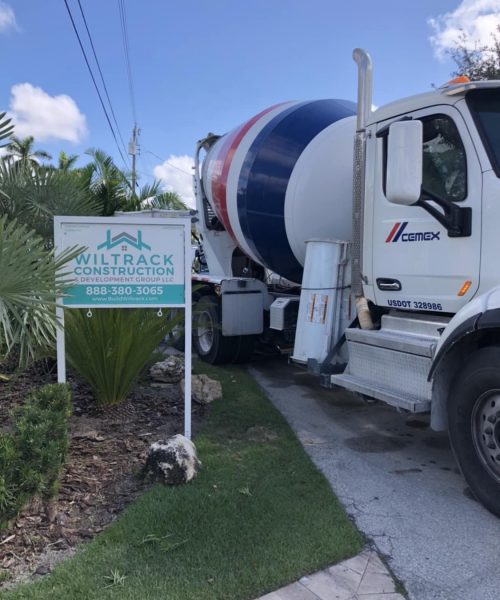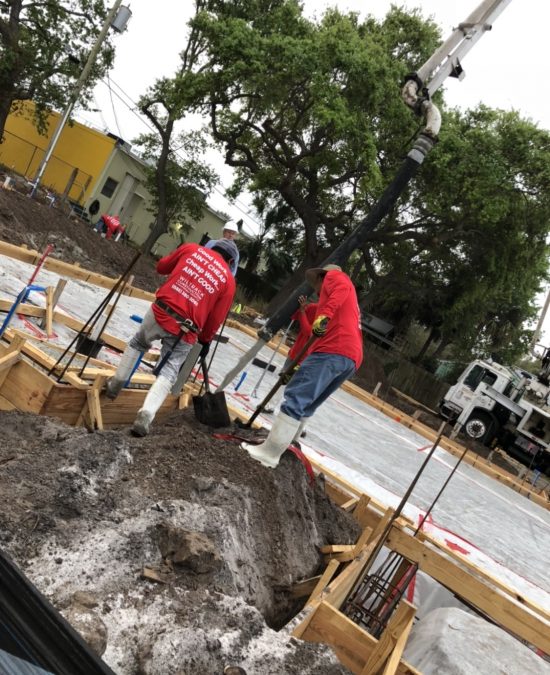Concrete Calculator
If you did not want to use our concrete calculator above, we have also left detailed instructions below to show you how to show your work. Like when your math teachers told you that you wouldn’t be able to use a calculator because you would never have one with you. Low and behold, not only do we have a calculator, we have the internet, and this fantastic calculator made just for calculating concrete.
How to estimate the amount of concrete for a slab:
- First of all, we analyze the thickness of concrete that you need. Usually, if you are building something new, the engineer on record designates the thickness of the concrete. The standard thickness is 4″ for most residential applications.
- After analyzing the thickness, We measure the length and width of the area that needs to be covered in concrete. For example, we can use a 10 foot by 10 foot area, which would equal 100 square feet.
- Before you move forward, you need to change your measurement from 4 inches into a decimal representing the footage measurement. We convert the thickness from inches to feet. The fundamental way to change inches to feet is to take your thickness of 4 inches. For example, then you would divide that by 12 inches; since there are 12 inches in a foot, it gives you the proper decimal conversion. In this case, you should come up with .33.
- Then we multiply the thickness in feet by the square footage to determine cubic feet. So following our example above 100 square feet by 0.33 feet, you come up with 33 cubic feet.
- Then we have to convert your cubic foot number to a cubic yard measurement since that is the standard way concrete is ordered. A cubic yard of concrete is a 3 foot by 3 foot by 3 foot cube, which has 27 square feet inside of it. So you take your number, for example, 33 cubic feet and divide that by 27, which leaves you with 1.22 yards of concrete.

After all the measurements and calculations you have done above, we also recommend that you always order at least 10% extra when ordering concrete. There are a lot of unforeseen variables as such as a not perfectly flat sub-grade and slightly less concrete that may be loaded into the truck. You never want to be waiting around for that extra “bump”(what we call this term in construction) of concrete coming from the plant. On the other hand, having to run back to the hardware store to grab a few bags while fighting the chance of getting a dreaded cold joint in your concrete.
If you have any issues with measuring your concrete or you have a question about the process, please call or email us and we will help walk you through it. Also, if you have any points that we should improve on or make our site even better, please give us some feedback.

Facts about concrete
Concrete, by definition, is a composition of abrasive elements that include gravel, sand, crushed stones, and slag that is fused with cement. Cement is an essential material that is used to make all the elements stick together, and it gets stronger and harder over time. The standard amount of time when concrete psi is measured is after 28 days. There are several types of cement, but the most commonly used is Portland cement.
Concrete durability is its excellent ability to resist weathering, chemical attacks, and abrasion while still maintaining desired engineering properties. The longevity of concrete structures around the world has proven to withstand tests of time like the hoover dam completed in 1936 and the Pantheon in Rome, which was completed around 125 AD. Dependent on the application, most building interiors design service life is 30 years. However, the actual average life span for a building here in the USA is about 75 years; which is more than double the service life. The concrete portion of structures often lasts well over 100 years. When appropriately designed, concrete structures can be repurposed and reused several times in the future. Reusing concrete structures not only is a green thing to do ,but it also conserves future materials and resources and reduces the constrcution time that new structures may require.
Now that you know how much concrete to order and some great facts about it, lets dive into one of the most important if not the most crucial phase of placing concrete. The curing phase is the maintenance of satisfactory moisture content and temperature in concrete for a sufficient amount of time during and immediately after placing the concrete. The need for adequate curing of concrete can not be overemphasized. A few simple ways you can accomplish that are supplying additional moisture with fogging or hooking up a sprinkler, but sometimes you will need to take extra steps, especially in states like south Florida, and cover the slab with plastic after you water it to reduce the amount of evaporation.
If you would like to dive in and learn even more about one of the best building materials we have to offer, check out this link for concretes history.